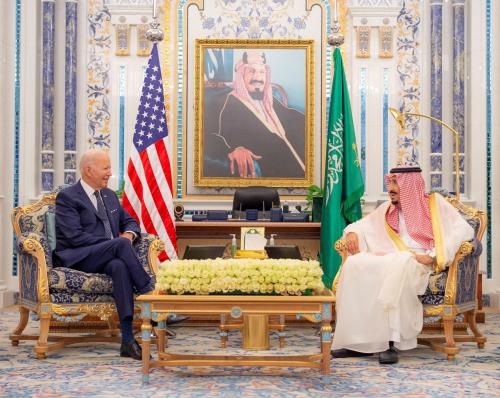Thursday, February 5 will mark the fourth anniversary of the entry into force of the New Strategic Arms Reduction Treaty (New START). The United States and Russia are implementing the treaty—despite sharp differences over Ukraine—and are on track to meet the treaty’s limits when they take full effect in three years.
President Obama and then-Russian President Medvedev signed New START in April 2010. Following ratification by the two countries, the treaty entered into force on February 5, 2011. The treaty requires that U.S. and Russian strategic nuclear forces each reduce to no more than 1,550 deployed strategic warheads and no more than 700 deployed intercontinental ballistic missiles (ICBMs), submarine-launched ballistic missiles (SLBMs) and heavy bombers within seven years (that is, by February 5, 2018).
Treaty implementation appears to be proceeding smoothly. According to the Department of State, as of January 29, the two sides had exchanged 7,877 notifications under the treaty. Each side had conducted the 18 treaty inspections it was allowed in the February 2014-February 2015 treaty year (as each had done in the three previous treaty years). The sides exchange data on the numbers of their treaty-limited arms every six months.
There have been occasional murmurings in Moscow suggesting that differences over the Russia-Ukraine conflict might jeopardize New START, but Russian officials have assured their U.S. counterparts that they remain committed to it. The treaty has greater importance now, at a time of increased bilateral tension.
The threat to New START may come from a different quarter: the U.S. Congress. Although one-third of Republican senators joined their Democratic colleagues in 2010 in voting to consent to New START’s ratification, House Republicans have since then sought to undo the treaty and defund its implementation.
Continuing to observe New START, however, remains in U.S. interests. The treaty provides hard limits on Russian strategic forces at a time when Moscow is building new ballistic missile submarines, new SLBMs and new ICBMs (the United States will begin building and deploying modernized strategic systems only in the 2020s). The Joint Chiefs of Staff have supported the treaty. In 2013, they even concluded that the United States could further reduce its strategic arsenal—by up to one-third below New START’s limit of 1,550 deployed strategic warheads—without endangering U.S. security.
The data exchanges, notifications and inspections provide a great deal of transparency into Russian strategic forces (and vice versa). This is important. For instance, U.S. national technical means of verification such as satellites can identify Russian ICBM silos, but they cannot tell how many warheads the missiles inside carry. Under New START’s verification procedures, U.S. personnel can conduct inspections of deployed ICBMs and SLBMs 10 times per year. When the team arrives at a Russian ICBM base or ballistic missile submarine port, it receives a list indicating the number of warheads on every deployed ballistic missile at that facility. The team then gets to choose a missile for inspection to confirm that the number of warheads matches the number declared.
Such transparency is of value to both sides, but it is invariably of greater value to the U.S. military and intelligence community, given the open nature of U.S. society and the increasingly closed nature of Russia.
The Obama administration long ago made clear its desire to build on New START and negotiate lower limits on deployed strategic nuclear forces, as well as to bring in limits on reserve strategic warheads and non-strategic nuclear weapons. Unfortunately, to date, Moscow has shown no readiness to consider further nuclear cuts. And Russia’s aggression against Ukraine over the past year has made for very difficult political atmospherics between Washington and Moscow.
The United States needs to respond to Russia’s egregious violation of the post-war European security order in Ukraine. That should include greater military assistance and defensive arms for the Ukrainian army and a bolstering of the U.S. conventional force posture in Europe. Washington must also find a way to bring Russia back to full compliance with the Intermediate-Range Nuclear Forces Treaty, which has important security benefits for Europe and Asia.
These are serious challenges, to be sure, and they have contributed significantly to the deterioration in U.S.-Russia relations. But it is precisely at difficult times such as these when New START’s caps on strategic nuclear force levels and its transparency become all the more important. The treaty continues to serve U.S. national security interests.


Commentary
New START Turns Four
February 2, 2015